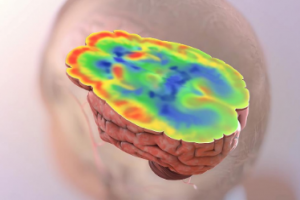Ultrasound waves focused on prefrontal cortex elevate mood and change brain connectivity
A team of researchers at the University of Arizona has found that low-intensity ultrasound waves directed at a particular region of the brain’s prefrontal cortex in healthy subjects can elevate mood, and...
A team of researchers at the University of Arizona has found that low-intensity ultrasound waves directed at a particular region of the brain’s prefrontal cortex in healthy subjects can elevate mood, and decrease connectivity in a brain network that has been shown to be hyperactive in psychiatric disorders. The method uses transcranial focused ultrasound (‘tFUS’), a painless, non-invasive technique to modulate brain function comparable to transcranial magnetic stimulation (‘TMS’), and transcranial direct current stimulation (‘tDCS’). This study shows, for the first time, a correlation between tFUS-induced mood enhancement, and reorganization of brain circuits.
Commonly used for medical imaging, ultrasound consists of mechanical vibrations in the range of ‘megahertz’, a million waves per second, well above human auditory threshold at 20 thousand waves per second. The waves echo off internal body surfaces including unborn babies to provide dynamic anatomical images. Low intensity ultrasound has also long been used as a therapy, e.g. to reduce pain, inflammation and peripheral nerve dysfunction all over the body. Regarding the brain, ultrasound is attenuated by the skull, but passes through sufficiently to focus on specific brain regions at desired depths. At low intensities, tFUS has been shown to be safe, and able to modulate brain activity, behavior and human mental states.





Related Posts